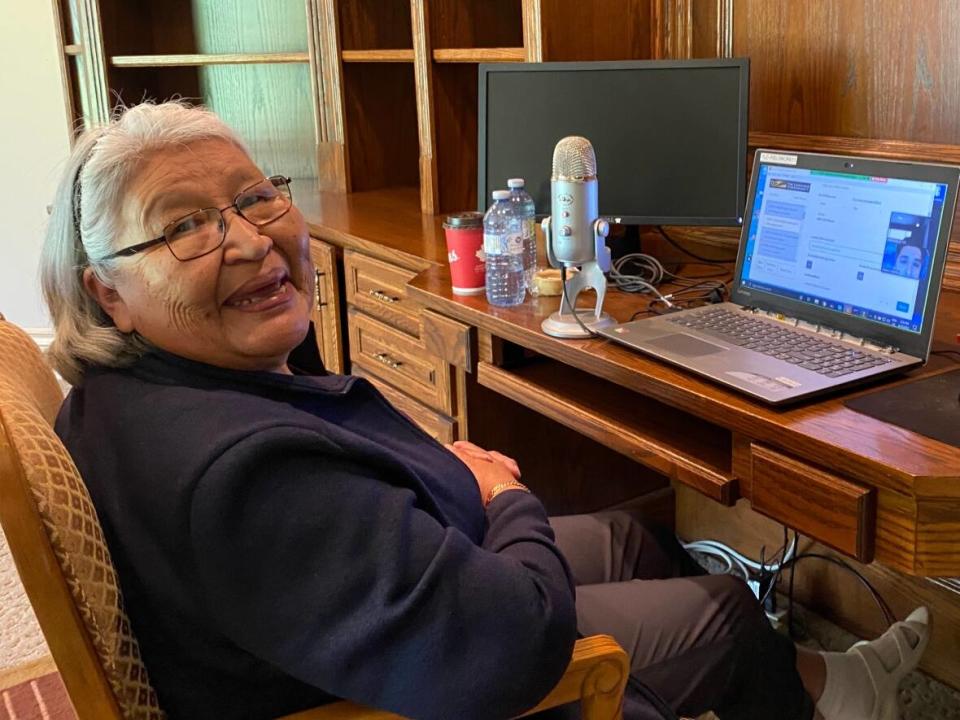How the Stoney Nakoda language is being preserved through new educational resources

The Stoney language has received a historic boost this week with the creation of new teaching resources for those young and old learning the language spoken as a native tongue by roughly 3,000 people.
Partnering with The Language Conservancy, the Stoney Nakoda Nation located west of Calgary hopes the initiative will help preserve its language for future generations.
With a strong tradition of speaking the language in the community, those behind the project say there was a real lack of resources and standardization when it came to teaching the younger generation.
"Right now our language teachers are actually creating their own materials," said Cherith Mark, who is the language and culture co-ordinator with the Stoney Education Authority. "And so I think what [our teachers] wanted to see was resources that could be used across the board in our school districts."

The resources will supplement the learning provided by teachers and families of Stoney Nakoda youth who might be hearing the language at home but need the context or structure they can get from school, said Mark.
Included in the learning materials are three picture books, a Level 1 textbook and an alphabet colouring book. There are also digital resources, like a 9,000-word dictionary, digital media and vocabulary app.
"We're just starting," said Mark. "Our momentum is going. So after this there's definitely going to be continuation — Level 2, Level 3 — you know, and we're still going to keep ... adding to the little bundle that we have started here."
The program works with Stoney elders, linguists and the community to build the large database that the education resources are built on.
The process of word collection began in 2019 with 40 elders and moved quickly, amassing a list of 14,000 words in just two weeks.

"We can build a dictionary in 12 months as opposed to 20 years that it normally takes," said Wilhelm Meya, who is the CEO of The Language Conservancy that has done similar work with 50 other endangered languages in Canada, U.S., Mexico and Australia.
In the two years after the initial dictionary list, the group whittled down the repetitions, alternate spellings and cleaning up the data so that it can be used to build the larger teaching resources.
The teams were even able to adapt their methodology through the pandemic by sending laptops into the community while linguists worked with Stoney speakers to refine the dictionary.
"It was a tremendous team effort. Very, very exciting moment for the community and got a lot of attention and excitement," Meya said.
"In some ways COVID created a new tool for us in terms of our work with endangered languages because we were able to then utilize these remote technologies and we can do this a little bit more efficiently."
The new digital language tools have also been key in bringing the younger generation, who come into the school system speaking English, closer to their own culture.
"Language and culture go hand-in-hand," said Mark. "You can't do one without the other. Like with cultural teachings, you have to know the language and understand it because most of the teachings are done in the language."
With files from Terri Trembath and Elissa Carpenter.

